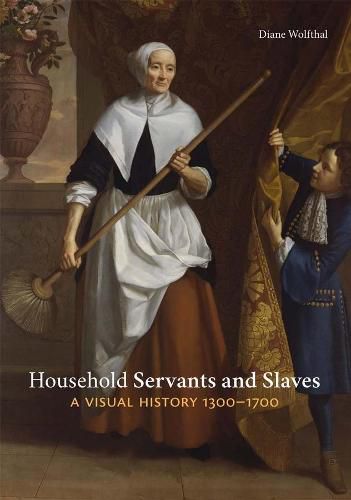Readings Newsletter
Become a Readings Member to make your shopping experience even easier.
Sign in or sign up for free!
You’re not far away from qualifying for FREE standard shipping within Australia
You’ve qualified for FREE standard shipping within Australia
The cart is loading…






The first book-length study of household servants and slaves, exploring a visual history over 400 years and four continents
The first book-length study of both images of ordinary household workers and their material culture, Household Servants and Slaves: A Visual History, 1300-1700 covers four hundred years and four continents, facilitating a better understanding of the changes in service that occurred as Europe developed a monetary economy, global trade, and colonialism. Diane Wolfthal presents new interpretations of artists including the Limbourg brothers, Albrecht Durer, Paolo Veronese, and Diego Velazquez, but also explores numerous long-neglected objects, including independent portraits of ordinary servants, servant dolls and their miniature cleaning utensils, and dummy boards, candlesticks, and tablestands in the form of servants and slaves.
Wolfthal analyzes the intersection of class, race, and gender while also interrogating the ideology of service, investigating both the material conditions of household workers’ lives and the immaterial qualities with which they were associated. If images repeatedly relegated servants to the background, then this book does the reverse: it foregrounds these figures in order to better understand the ideological and aesthetic functions that they served.
$9.00 standard shipping within Australia
FREE standard shipping within Australia for orders over $100.00
Express & International shipping calculated at checkout
The first book-length study of household servants and slaves, exploring a visual history over 400 years and four continents
The first book-length study of both images of ordinary household workers and their material culture, Household Servants and Slaves: A Visual History, 1300-1700 covers four hundred years and four continents, facilitating a better understanding of the changes in service that occurred as Europe developed a monetary economy, global trade, and colonialism. Diane Wolfthal presents new interpretations of artists including the Limbourg brothers, Albrecht Durer, Paolo Veronese, and Diego Velazquez, but also explores numerous long-neglected objects, including independent portraits of ordinary servants, servant dolls and their miniature cleaning utensils, and dummy boards, candlesticks, and tablestands in the form of servants and slaves.
Wolfthal analyzes the intersection of class, race, and gender while also interrogating the ideology of service, investigating both the material conditions of household workers’ lives and the immaterial qualities with which they were associated. If images repeatedly relegated servants to the background, then this book does the reverse: it foregrounds these figures in order to better understand the ideological and aesthetic functions that they served.